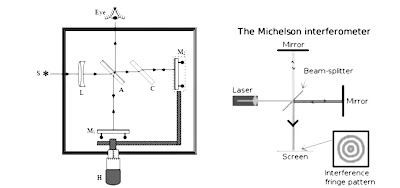Interferometry
Hello mechons, in this post we are going to explain to you about the interferometry, Working of interferometers and the types of Interferometers with its applications.
Let me ask a question to you,
What is interferometry?
Interferometry is the branch of physics in which the electromagnetic waves are superimposed with each other and results in the interference of waves.
The interference of these waves are used to find the information of the properties. This Interferometry technique is almost used in many measuring and investigative fields such as astronomy, fiber optics, engineering metrology, seismology, oceanography, optical metrology, spectroscopy and so on.
Principle of Interferometry
Interferometers works on the basis principle of superposition. It combines the waves in such a way that is useful for diagnosis or some other purposes like understanding the nature of the properties based on the original state of waves. When two waves with same frequency interfere with each other, the resulting intensity pattern of these waves are determined by the phase difference between those interfering waves.
Basically two types of interfere will occur in combination of waves
1. Constructive Interference - If two waves are in the same phase, then it will undergo constructive interference.
2. Destructive interference - If two waves are in difference phase or out of phase then it will undergo destructive interference.
If two waves are neither in phase nor in out of phase, then those waves will have an intermediate pattern of intensity. In those cases the relative phase difference is used to determine the nature of the waves.(i.e. The difference between the phase angles).
Working of Interferometers
A beam of light single source is splitted up into two beams that will travel in two different paths. And those two beams of light is combined again to produce interference. These interfered waves gives us the information about the optical path and lengths of a component. In our Engineering Metrology these interference of waves are used to identify the shape and length of the objects, It gives results with high accuracy and high precision. The interferometers are the measurement instruments with highest precision in existence.
Types of Interferometers
What are the types of interferometers?
There are many types of interferometers in the world. But now we are going to see about just five main types of Interferometers in brief. They are
- Michelson interferometer
- Fabry-Perot interferometer
- Mach - Zender Interferometer
- Sagnac interferometer
- Laser interferometer
 |
| (Schematic representation of Michelson interferometer) |
Michelson interferometer
This is the famous type of interferometer among all the interfeeometrs. This type of interferometer was found in the early of 19th century. This type provide the souce of Einstein's theory of relativity.
Fabry- Perot interferometer
The Fabry-Perot interferometer also called as an etalon, is developed from the Michelson interferometer. This type of makes clearer and sharper interference fringes that are more easier to see and measure.
Mach-Zender interferometer
This type of interferometer uses two beams rather than splitting one and produces two output beams, and it analyzed the two beams of light separately. This types are widely used in fluid dynamics and aero dynamics.
Sagnac interferometers
This type of interferometers are also called as ring interferometer. This type of interferometers splits light into two beams. And these two beams are instructed to travel in opposite directions in a closed loop like ring structure. So, it is also called as ring interferometer.
Laser interferometers:
The most modern types of interferometers use laser light for the interference source. Since the laser light is more precise and produce coherent beams of light than ordinary light. The inventors of interferometry didn't have access to laser light in those days, so they had to use beams of light and passed it through the slits for splitting of ways and then for combining to produce interference. The laser interferometers are used to find the extreme accurate length of the objects. These have precise upto the range 0.1 μm to 100m.
Applications of interferometers
What are interferometers used in many fields such as
- Measuring instruments for measuring and analysing flatness, length, and shape of the objects.
- It is used in radar technologies and used in astronomy.
- It is used in seismograph, fiber optics and optical metrology etc.,
Conclusion
That's all about the interferometry, types, working and applications of interferometers for now. I hope that you understand the definitions, working and types.
If you have any queries or doubts regarding this topic don't hesitate put that in the below-mentioned comments section. We are here for you we will reply as fast as possible.
And one more thing Always remember to
Spark your brain and Throttle your knowledge!.

